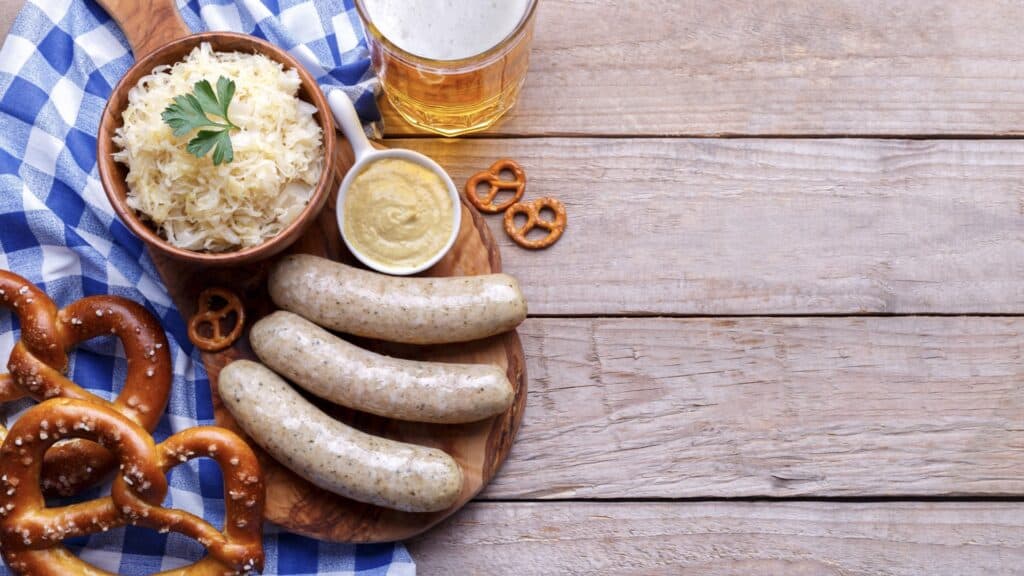If you travel to Germany and want a truly authentic experience, you will want to try some of the country's delicious food.
The cuisine varies from region to region, but many recipes rely on a mixture of meat, potatoes, and bread, especially pork, featuring greens like kale and cabbage. Beer, coffee, and cake are other famous elements of the cuisine.
Heading to a new country with unfamiliar cuisine to your palate can be daunting – especially when there are many strange-looking and strange-sounding dishes to choose from. You likely want to experiment when on holiday, though, so we are here to help.
We have compiled this guide to help you find traditional German dishes you should eat while traveling in Germany.
1. Dresdner Stollen
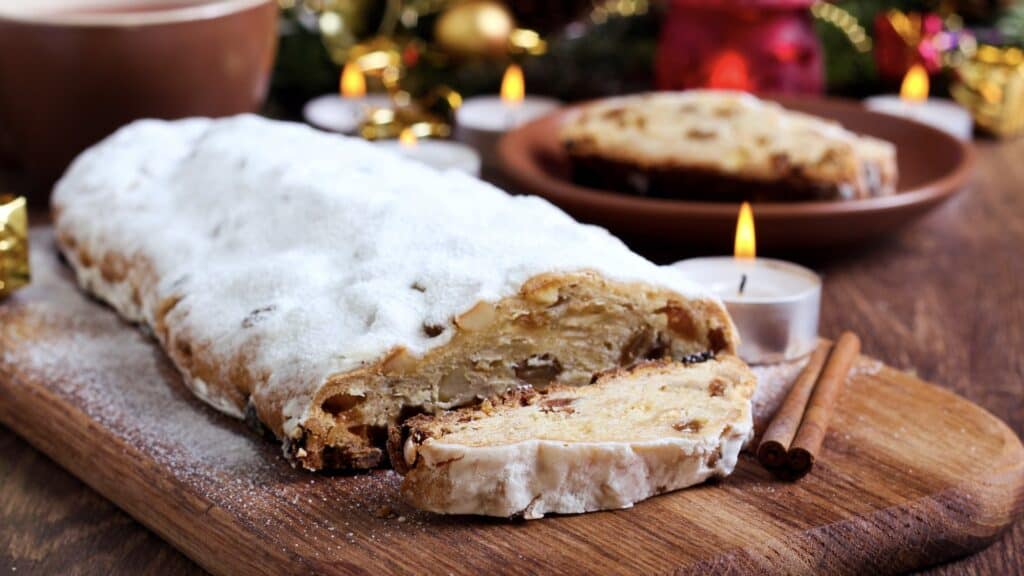
Starting with something sweet for cake lovers, Dresdner Stollen is one of the best German Christmas dishes and a must-try whenever you go. Its origins date back to 1474 to the St Batholomew Saxon Christian Hospital. The patients were offered Christmas bread made with yeast, water, and flour. Over the centuries, Germans have perfected this dish by adding spices, dried fruits, raisins, marzipan, and nuts.
Dresden Stollen is the granddaddy of them all and is unique as it is best eaten two weeks after it has been baked. As a symbol of Christmas, it is widely available in the famous German Christmas markets across the country during the winter leading up to the special day.
2. Leberkase
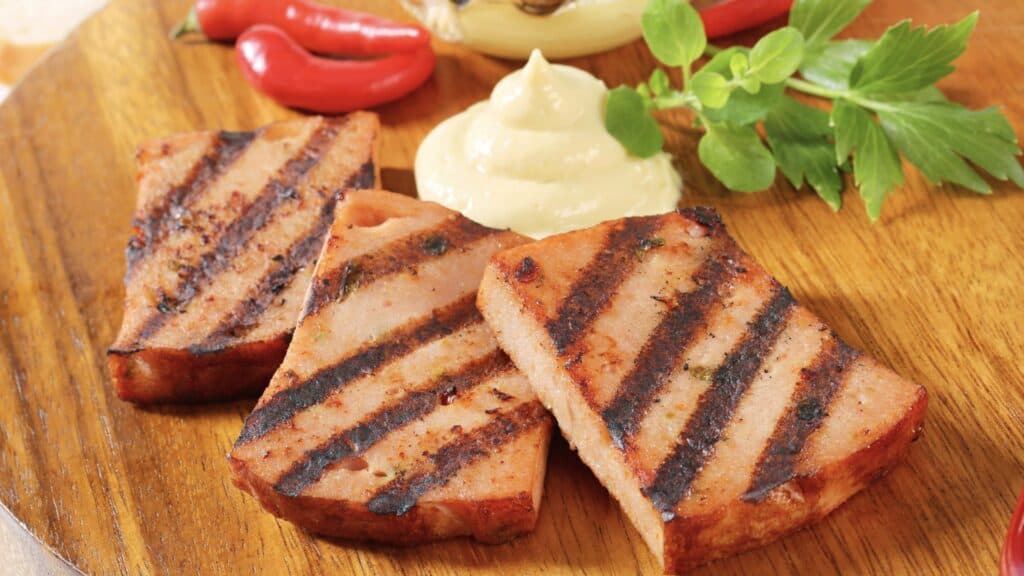
Don't be alarmed that some German food dishes have strange names, like this one, which is known as liver cheese when translated directly. It is closer in design and taste to meatloaf. This is popular in southern Germany, where it is made from heavily salted beef, though often onions and pork are added.
The meat is then minced and baked in an oven dish until a brown crust appears. Leberkase is usually served as a main meal, with potato salad and fried eggs, or cold as an appetizer with pickled cucumber.
Tradition states that Leberkase was invented around 1776 by a butcher in Bavaria.
3. Käsespätzle
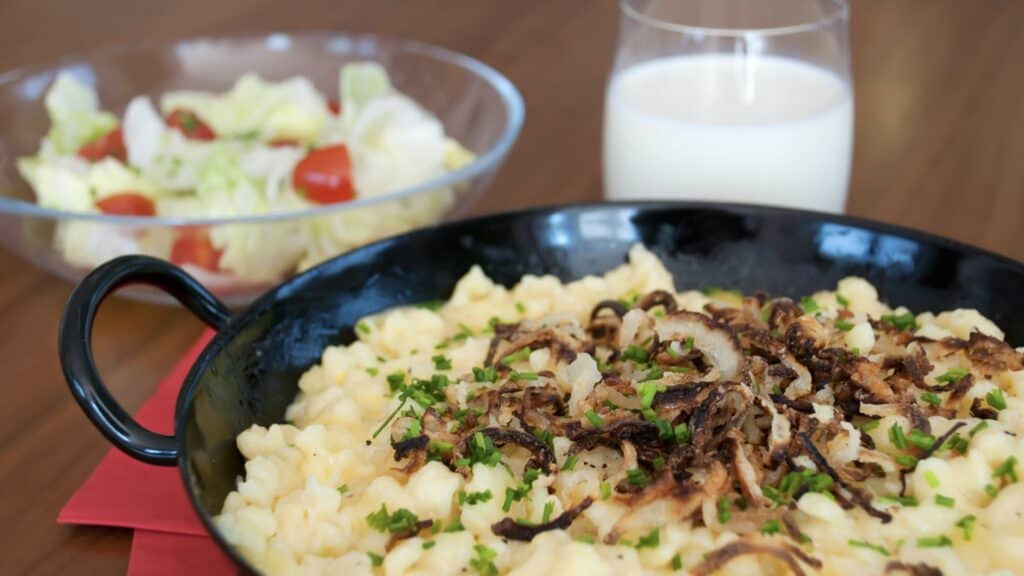
One of the acceptable exceptions to the rule that typical German dishes feature a heavy amount of meat is Käsespätzle. Originating from Swabia and Aligau, this is like a German take on a traditional American mac and cheese, but homemade noodles are used instead of pasta.
It is easy and cheap to prepare and best enjoyed in a bowl with fried onions. Many hikers and skiers on the Alps in Salzburg enjoy feasting on it to keep them warm. This is a very morish comfort food, like its Mac and cheese counterpart from across the Atlantic.
Related: Austrian Food: 16 Must-Try Traditional Austrian Dishes and Desserts
4. Sauerbraten

Like many good German dishes, Sauerbraten will warm and fill you with delicious meat-based protein. This traditional marinated meat roast features venison, lamb, pork, veal, or horse (depending on your conscience and where you get it) in a special sauce of vinegar or wine and water with various seasonings, herbs, and spices. The meat is left to soak in all that goodness between 3 and 10 days before it is cooked.
The differences in the recipes for this dish depend on the region you visit. For instance, vinegar is used in regions close to Poland and the Czech Republic, while red wine is used in the parts of Germany that border France. Interestingly, in the Rhineland, they add raisins and beetroot syrup.
The dish is usually paired with side dishes like Spaetzle, red cabbage, boiled potatoes, and dumplings.
5. Kartoffelsalat
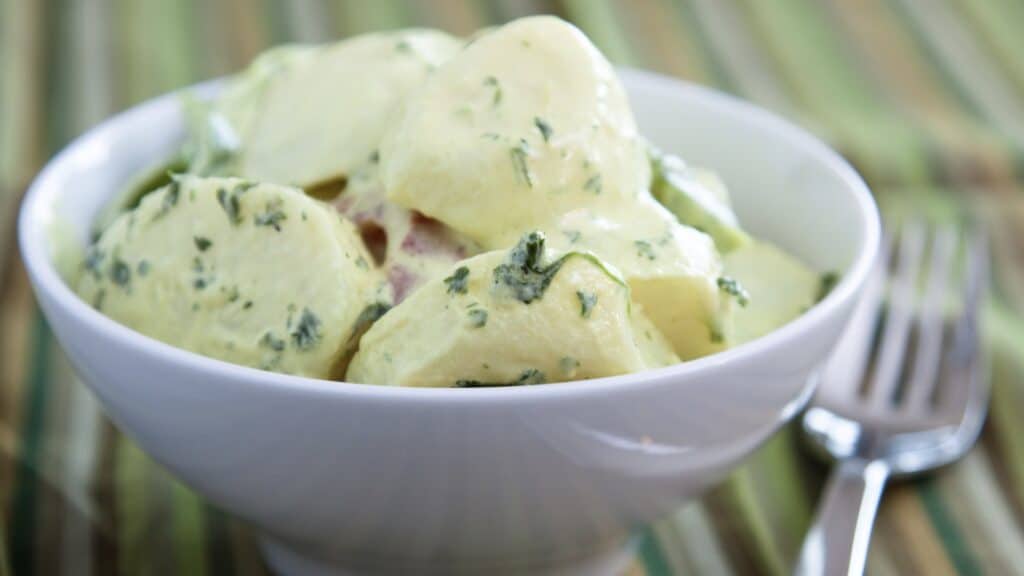
Kartoffelsalat, in case you didn't know, is one of the most famous and best German dishes. It is a kind of potato salad. This can be served either on its own or as a side dish, and it is one of those meals for which every German family will have a slightly different recipe.
The main things that stay true to the traditional German potato salad are potatoes boiled in their skins to preserve a greater volume of vitamins and a dressing with onions in lemon juice, French mustard, and mayonnaise.
While meat is not often used, you may find some eateries, or if you are staying with locals, prepare and serve it with fish, sausages, or other types of meat mixed into it.
6. Eintopf
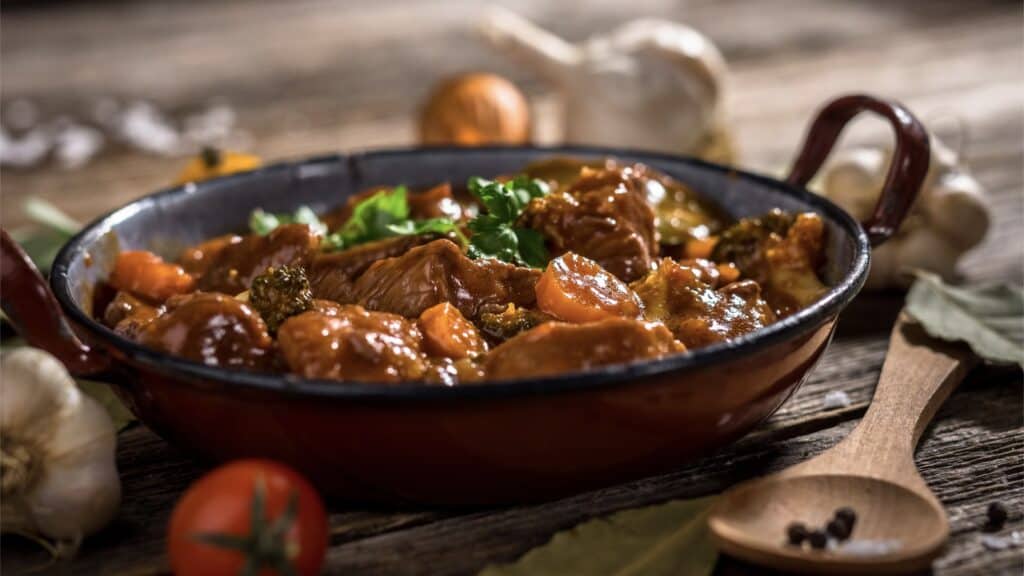
If you love soup, you will love one of the most notable traditional German foods, Eintopf. The name's translation explains what makes this so special – one-pot. Everything is cooked in the pot at the same time. While you will find a stunning variety of recipes for this dish, it is traditionally a thick soup with the consistency between a stew and a soup. It is also famous for being very fragrant and incredibly filling.
Like many traditional one-pot and soup dishes, just about anything can be used to make it, from wieners to fish or beef. Then, vegetables and other staples, like cabbage, potatoes, carrots, smoked meats, peas, greens, pasta, and even crackers, can be added.
7. Labskaus
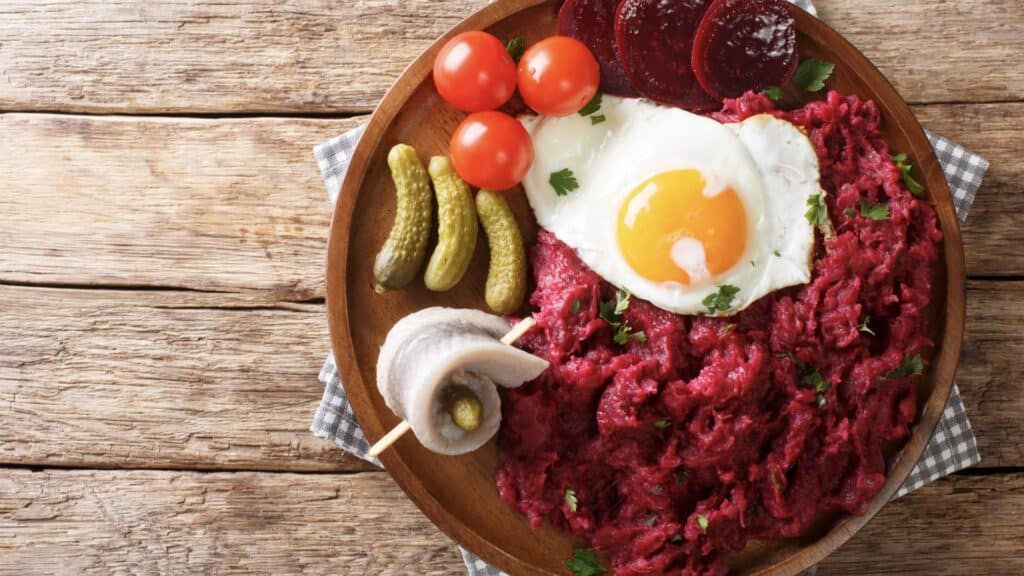
You may have guessed the best German dishes are often the most calorific. Labskaus is an excellent example of this. It is a very unattractive but incredibly delicious soup plate. It originates with sailors, who were used to traveling the Baltic Sea and preparing a mixture of whatever food they had onboard. The core of the most famous recipe is potatoes, beets, herring pieces, gherkins, and corned beef.
It is generally served as a main meal with the classic German combination of fried eggs and pickled cucumber slices.
8. Berliner Eisbein
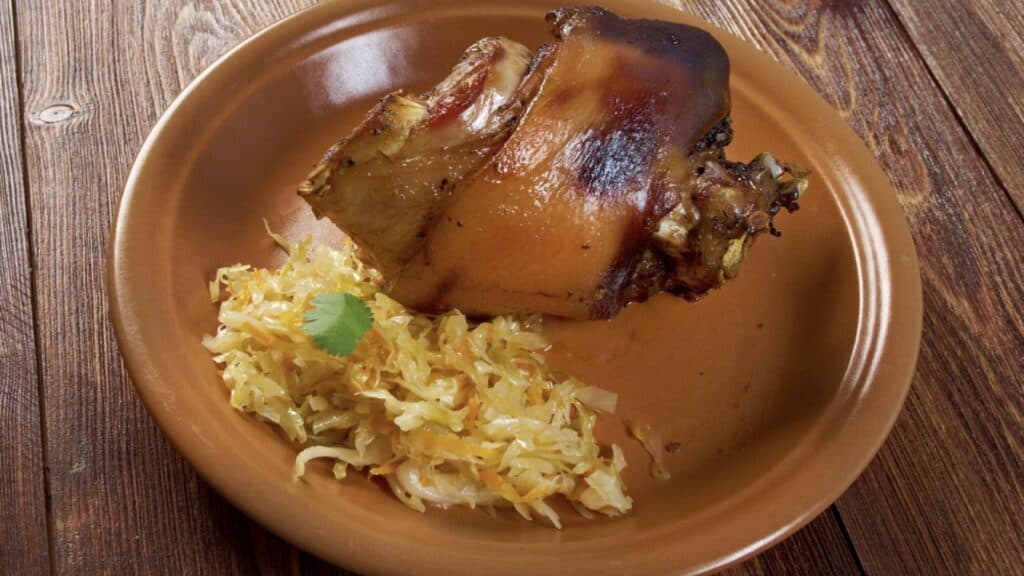
Pork is a core part of German food culture, and one of the most popular dishes featuring this meat is undoubtedly Berliner Eisbein. Particularly popular in the East, it features a pork shank cooked in German beer first and then baked with a generous helping of flavorings like spices, juniper berries, onions, and garlic.
What about the curious name? The German word Eisbein, when translated, means literally “an ice foot.” As you may have already figured out, this hearty dish was given that name because many people eat it during the frostiest times of winter.
There is also a case for the name referring to the crispy shin that shines like it was covered with a thin, icy layer. Often you will find this dish served with pea puree and sauerkraut.
9. Rinderrouladen
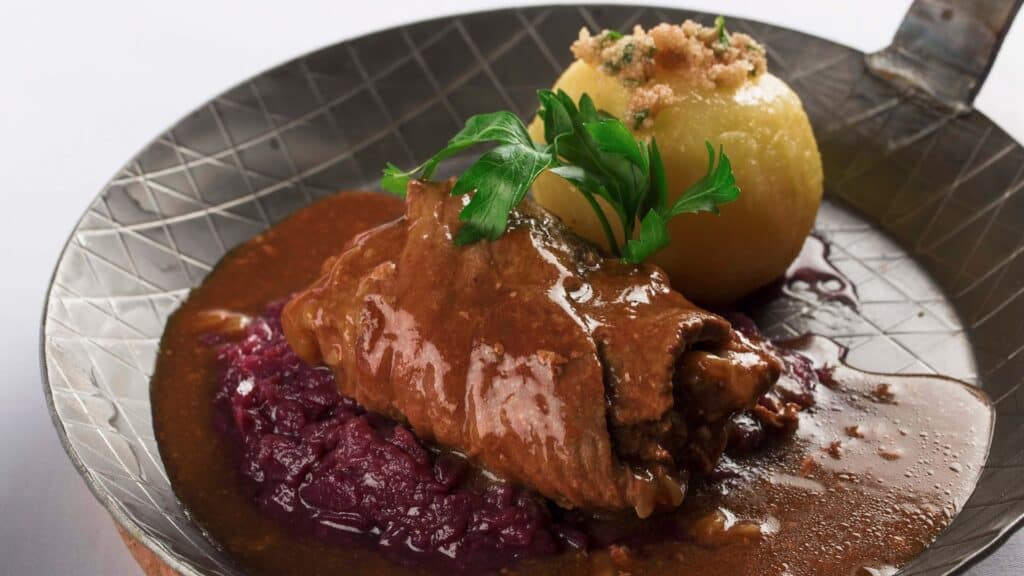
Another calorific famous German food, especially during Christmas and the frost of winter, is Rinderrouladen. This consists of thin and long layers of delicious beef tenderloin wrapped around a stuffing of pickled cucumber, onion, mustard, and bacon. This dish is unique because of its spicy and dark sauce, made from vegetables, red wine, and broth, which gives it a mesmerizing aroma.
Expect it to be served with traditional side dishes like flour dumplings, boiled potatoes, and stewed cabbage.
Although it may sound strange to have a tender cut of beef, it is delicious when prepared by someone who knows what they are doing. Many restaurants offer this and will have their take on the classic recipe.
10. Falscher Hase
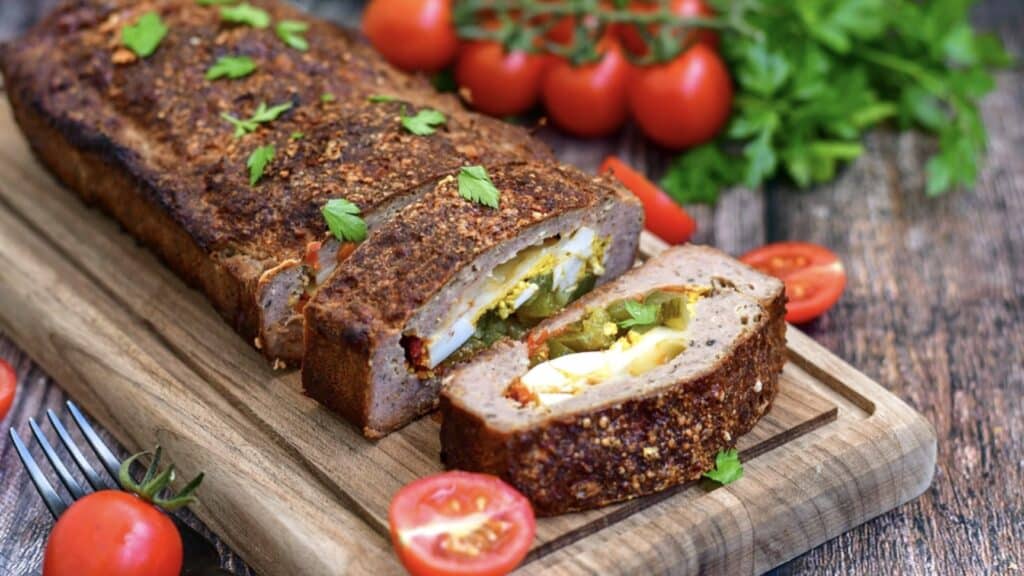
Among the various traditional German dishes is a tasty stew with a strange name. Falscher Hase translates as “fake hare, ” consisting of potatoes, onion, and minced pork stuffed with boiled eggs in the center. The recipe first appeared in Germany following World War II and was used as a staple when food was short. The name refers to the fact that roasted hares and rabbits were once a traditional meat used in German cooking for Sunday meals. Still, the animals disappeared after Germany's many bombardments during the war.
Clever homemakers managed its invention, creating a delicious meaty roll that had an upper half that looked like the hind of a hare or rabbit.
11. Konigsberg Klopse
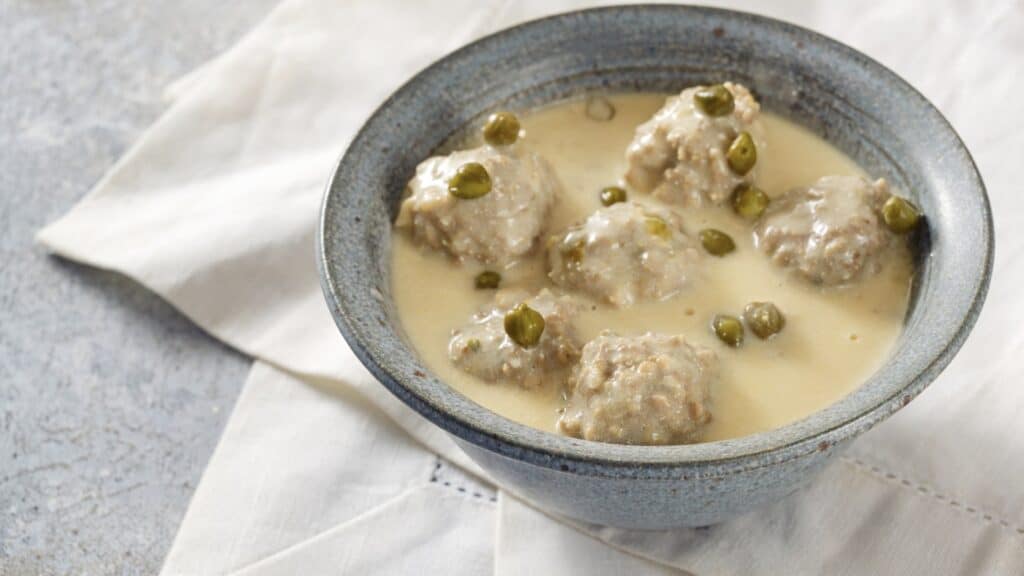
One of the best German snack food dishes is Konigsberg Klopse. Anyone who has been to Germany and loves meatballs will likely have raved about this dish. Its recipe first appeared in Kaliningrad when it was known as Konigsberg during the 19th century.
Many supermarkets sell semi-finished forms of this meal, but the best place to try it is at a traditional German food restaurant.
12. Maul Taschen
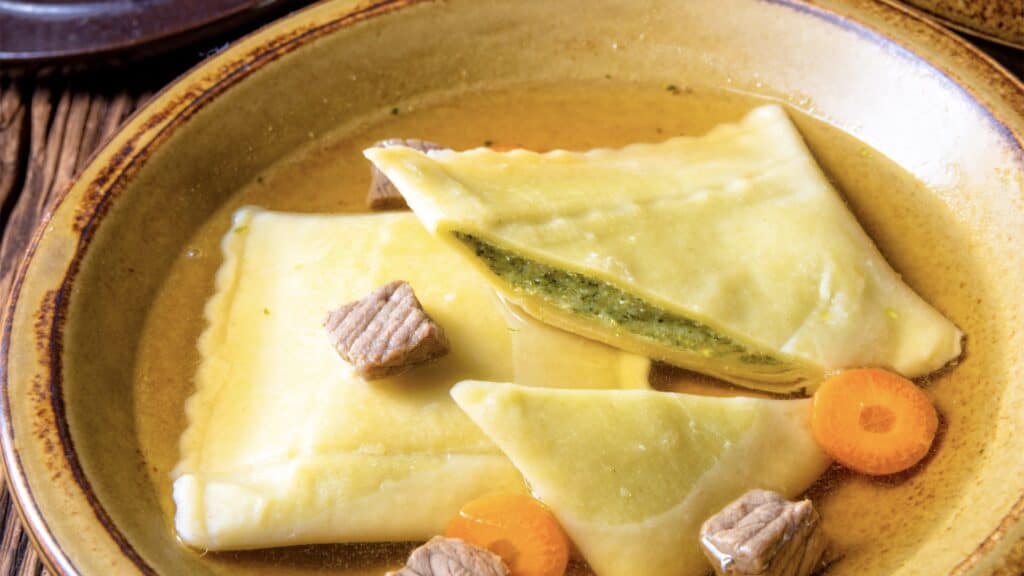
If you want to try something different, consider one of the most unusual traditional German dishes – Maul Taschen. These oversized dumplings are stuffed generously with spinach, ham, bacon, chopped meat, marjoram, parsley, and nutmeg and then cooked in a flavorsome beef broth.
Its origins are thought to be South German Swabia, where it is often referred to as HerrgottsbescheiBerle or God's cheater.
A German legend suggests that monks in the Maul Bronn monastery designed the dish. During Good Friday, when it was forbidden to eat meat, many of the sneaky monks would secretly switch out the greens in the dumpling stuffing for beef.
13. Schnitzel

One of the most famous German food dishes is Schnitzel. Although there are many regional differences and variations of the recipe for this dish, one of the best is the calf schnitzel, also known as Vienna Schnitzel, along with the pork schnitzel.
What is Schnitzel, then? Thin and boned meat chops from the hip of an animal. The classic take involves the chops being cooked in a seasoned breadcrumb coating. Some exciting varieties include the Hamburg Schnitzel, served with fried onions and eggs. Spree Wald Schnitzel is breaded and then spread with horseradish sauce, covered in pickled cucumber slices, and baked with cheese.
14. Bratwurst
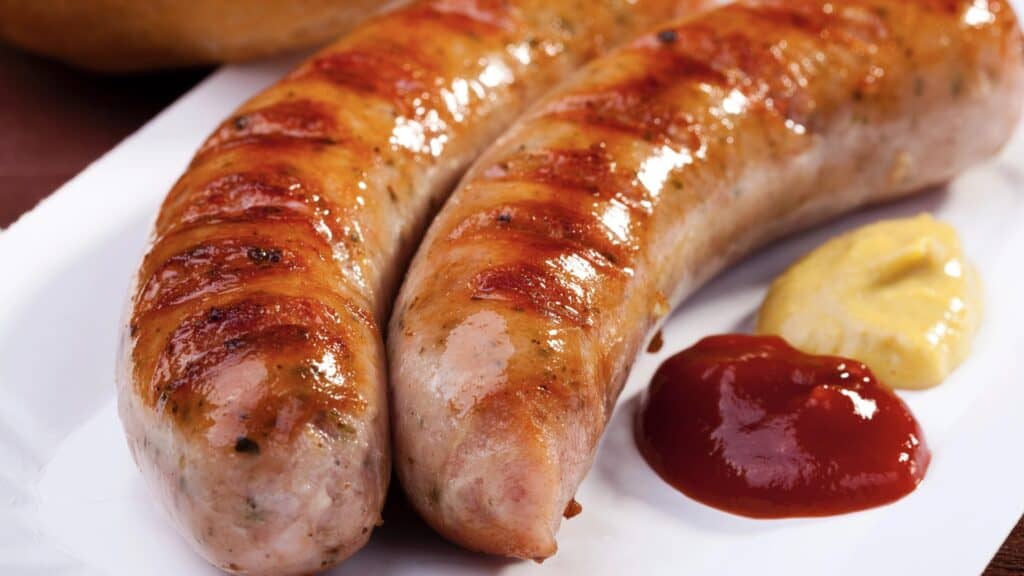
This would not be an authentic guide to eating like Germans in Germany if it didn't include one of the best German dishes, bratwurst. You probably know bratwurst refers to sausages, but did you know it refers to a group of links cooked on the grill or fried in a pan? Generally, they are made from minced pork and stuffed into a natural casing.
Although serving will differ from place to place, bratwurst works best with potato salad or fried potatoes and sauerkraut. When served as a German snack, bratwurst comes from stalls with some bread and then a choice of horseradish, ketchup, or mustard, almost like a traditional American hot dog, but with a bit more flare and more excellent seasoning and overall flavor.
15. Schwarzwälder Kirsch torte
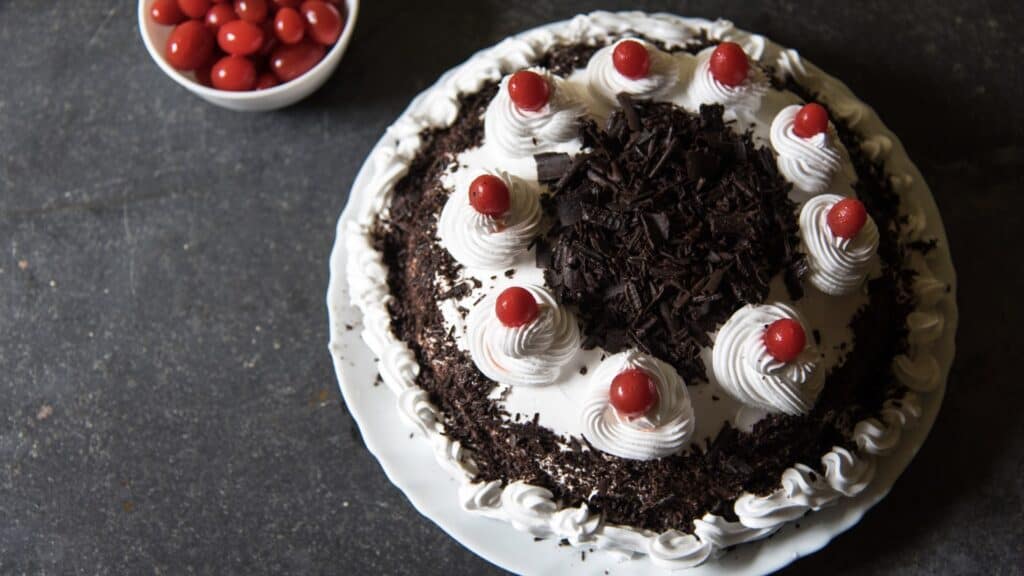
If all this meat and heavily savory food is too much, remember many sweets are authentic German dishes. Aside from the Stollen above, one of the most famous is the Schwarzwälder Kirsch torte. This dish consists of a sponge cake soaked in liqueur and topped with bitter chocolate, cherries, and whipped cream.
It was 1915 when this multilayered and tasty treat was officially mentioned when the famous confectioner Josef Keller in Bavaria decorated chocolate cakes with cherries and cream. The recipe became a staple of German food by 1930, when most of the country knew the formula.
What is its name? Its name comes from a combination of the colors red, brown, and white, and it is inspired by and a homage to the traditional costumes worn by Black Forest residents.
Final Thoughts
Germany is a richly diverse country with a strong heritage that offers plenty to explore in terms of architecture, art, and beer. German food is at the core of German culture, and we have only scratched the surface. But pairing your journey to this fascinating country with any combination of the traditional German dishes above will make it all the more authentic and allow you to get more from the experience.
We have tried to include all of the most popular offerings in German food to ensure your tastebuds have as much of an adventure as the rest of your body, mind, and spirit.
However, if you have already traveled to Germany or are a local and think we may still need to include an essential inclusion in this guide to the best traditional German foods, please let us know in the comments section. We are happy to update our list to include your offering.

I’m Steve. I’m an English Teacher, traveler, and an avid outdoorsman. If you’d like to comment, ask a question, or simply say hi, leave me a message here, on Twitter (@thefrugalexpat1). Many of my posts have been written to help those in their journey to financial independence. I am on my journey, and as I learn more I hope to share more. And as always, thanks for reading The Frugal Expat.

